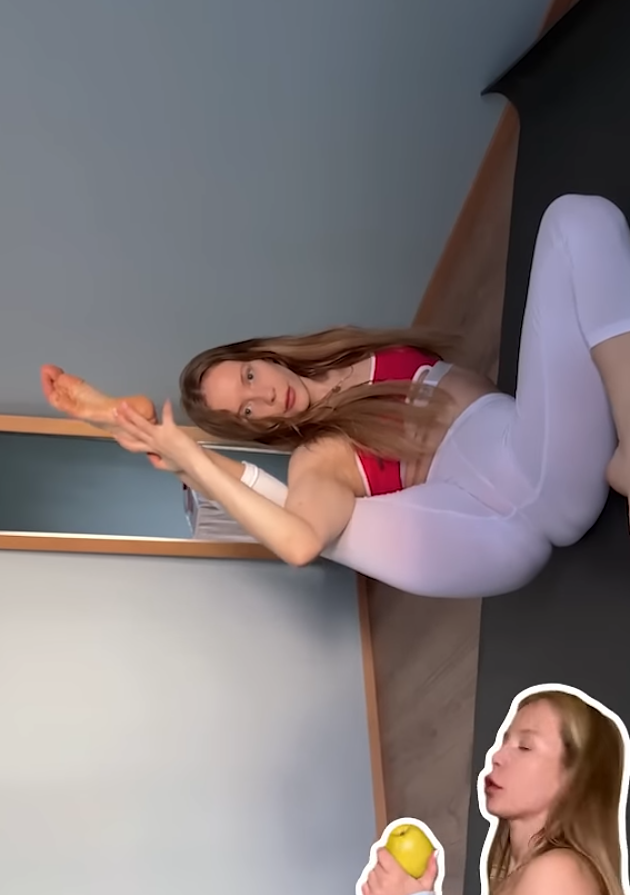Dynamic Stretching for Improved Performance
#fitness #yoga #stretching #flexibility #yogaflow
Stretching is an essential component of any fitness regimen, contributing not only to the prevention of injuries but also enhancing overall performance. While static stretching has long been a go-to for flexibility, dynamic stretching has gained recognition for its unique benefits in improving physical performance, particularly when integrated into yoga flows. This approach involves moving parts of your body and gradually increasing the reach, speed of movement, or both. In contrast to traditional static stretches, which involve holding a position for a period of time, dynamic stretches involve continuous movement, helping to increase the range of motion while activating the muscles in a functional way. As the world of fitness and yoga continues to evolve, dynamic stretching is becoming an increasingly popular tool for athletes and fitness enthusiasts alike.


What is Dynamic Stretching?
Dynamic stretching is a form of stretching where muscles are actively engaged through movement. Unlike static stretching, where you hold a position to lengthen muscles, dynamic stretching involves controlled, smooth, and deliberate movements that prepare the body for physical activity. Dynamic stretches are usually performed in a fluid sequence that increases flexibility and range of motion in preparation for more strenuous activities.
Some examples of dynamic stretching include leg swings, walking lunges, high knees, arm circles, and torso twists. These exercises not only stretch the muscles but also warm up the body, increase circulation, and activate muscles that are about to be used in a workout or sports activity.

The Role of Dynamic Stretching in Performance
The primary goal of dynamic stretching is to enhance performance by improving flexibility, strength, and coordination. Here’s how dynamic stretching can elevate your workout or yoga practice:

1. Improves Range of Motion and Flexibility
Dynamic stretches help to improve flexibility by actively moving muscles through their full range of motion. Over time, this can lead to greater flexibility and mobility, which is crucial for performing a variety of physical activities with ease. In yoga, where flexibility and fluid movement are essential, incorporating dynamic stretching can help you achieve deeper stretches and smoother transitions between poses.

2. Increases Muscle Activation
One of the significant benefits of dynamic stretching is its ability to activate muscles in preparation for activity. Dynamic stretches help to “wake up” and engage the muscles you are about to use, ensuring that they are properly warmed up and ready to perform. This is particularly important for athletes and yogis who need full-body activation before engaging in their practices or exercises.

For example, performing dynamic leg swings before a run helps to engage the hip flexors, hamstrings, and quadriceps, preparing the lower body for the intense demands of running. Similarly, arm circles and shoulder rolls activate the upper body for better performance in yoga poses that require shoulder mobility.

3. Enhances Coordination and Balance
Dynamic stretching often involves movements that challenge your coordination, balance, and control. By incorporating dynamic stretches into your routine, you can improve your ability to control your body, making it easier to perform complex movements with better precision and balance. This is particularly beneficial for yoga practitioners, where balance is essential for mastering poses like Tree Pose or Warrior III.
4. Increases Blood Flow and Circulation
Dynamic stretching elevates your heart rate and increases blood flow to your muscles. This not only prepares the body for physical activity but also helps to reduce the risk of injury. Blood flow to the muscles increases the delivery of oxygen and nutrients while removing waste products from the muscles, which can improve endurance and reduce muscle fatigue.
5. Prepares the Body for Intensity
Whether you’re heading into an intense workout or a yoga class that involves challenging asanas, dynamic stretching primes the body for higher-intensity movements. By gradually increasing the speed and range of motion in your stretches, you signal to your body that the intensity level is about to rise, allowing your muscles and joints to perform at their best. This makes dynamic stretching particularly beneficial before activities such as running, cycling, strength training, or yoga flows that require flexibility and strength.
Dynamic Stretching vs. Static Stretching: Why Dynamic Wins Pre-Activity
While both dynamic and static stretching have their benefits, dynamic stretching is generally more effective when preparing the body for exercise. Here’s why:
- Warm-Up vs. Cool-Down: Dynamic stretching is best used during the warm-up phase of a workout, as it helps to prepare the body for movement. Static stretching, on the other hand, is more appropriate for the cool-down phase, as it allows the muscles to relax and elongate after the activity has been completed.
- Active Range of Motion: Dynamic stretches take the muscles through a full range of motion while they are actively engaged. This is key for improving flexibility and mobility. Static stretches, however, involve holding a position without movement, which can sometimes cause the muscles to stiffen if done too early in the workout.
- Injury Prevention: Dynamic stretching can help reduce the risk of injury by ensuring that the muscles and joints are actively moving and ready for the demands of exercise. It prepares the body by improving circulation, activating muscles, and increasing joint mobility. Static stretching, when done before exercise, can sometimes decrease muscle power and increase the likelihood of strain or injury.
Incorporating Dynamic Stretching into Yoga
In the world of yoga, flexibility and fluid movement are essential components of practice. Incorporating dynamic stretches into your yoga routine can deepen your stretches and enhance the flow of your practice. Here’s how dynamic stretching can elevate your yoga experience:
1. Smooth Transitions Between Poses
Dynamic stretching can help to prepare the body for the transitions between yoga poses, making them smoother and more fluid. As you move from one pose to another, dynamic stretching engages the muscles in the necessary range of motion, allowing for better control and seamless transitions. For example, transitioning from Downward Dog to Upward Dog can be made easier by including dynamic stretches like arm reaches or hip rotations.
2. Improved Strength and Flexibility
Yoga is a practice that requires both strength and flexibility. Dynamic stretches target multiple muscle groups, which helps in improving both of these elements simultaneously. By incorporating leg swings, lunges, or arm swings into your warm-up, you prepare your body for both strength-building poses and deep stretches, enhancing the overall effectiveness of your yoga practice.
3. Breath Control
Dynamic stretching can be synchronized with breath, helping to improve the connection between movement and breath. In yoga, the breath is just as important as the movement itself. By linking your breath to each dynamic stretch, you not only improve your flexibility but also enhance your focus, which is key for mastering advanced poses.
4. Mind-Body Connection
Yoga emphasizes the mind-body connection, and dynamic stretching fosters that connection by requiring both awareness and control. As you move through each stretch, focus on your body’s alignment, breath, and the sensations you feel in each muscle. This mindfulness will not only help you to improve your flexibility but also to deepen your yoga practice.
A Dynamic Stretching Routine to Try
Here’s a simple dynamic stretching routine that you can incorporate into your fitness or yoga warm-up:
- Arm Circles – Stand tall and extend your arms straight out to the sides. Begin making small circles, gradually increasing the size. Reverse the direction after 30 seconds.
- Leg Swings – Stand next to a wall or support. Swing one leg forward and backward, gradually increasing the range of motion. Repeat for 30 seconds on each leg.
- Lunges with a Twist – Step forward into a lunge, keeping the back knee off the ground. As you lunge, twist your torso toward the front leg and extend your arms. This stretch engages the hips, quads, and core.
- High Knees – Jog in place, bringing your knees up toward your chest as high as possible. This exercise activates your hip flexors and warms up your core.
- Torso Twists – Stand with your feet hip-width apart and rotate your torso from side to side, allowing your arms to swing loosely with the motion. This stretch engages the spine and improves rotational flexibility.
Conclusion
Dynamic stretching is an essential part of a comprehensive fitness routine that can enhance performance, prevent injuries, and improve flexibility. Whether you’re preparing for a yoga session, a run, or a workout, dynamic stretching offers numerous benefits that help activate muscles, improve range of motion, and increase blood flow. By incorporating dynamic stretches into your practice, you’ll not only perform better but also deepen your mind-body connection, ensuring that your workout or yoga flow is smooth, effective, and enjoyable.



